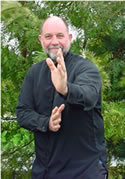Chapter 40
"The movement of the Tao
By contraries proceeds;
And weakness marks the course
Of Tao's mighty deeds.
All things under heaven sprang from It as existing and named.
That existence sprang from It as non-existent and not named."
- Translated by James Legge, 1891, Chapter 40
"Reversion
is the action of Tao.
Gentleness is the function of Tao.
The things of this world come from Being,
And Being (comes) from Non-being."
- Translated by Lin Yutang, 1955, Chapter 40
Gentleness is the function of Tao.
The things of this world come from Being,
And Being (comes) from Non-being."
- Translated by Lin Yutang, 1955, Chapter 40
The only useful quality, weakness.
For though all creatures under heaven are the products of Being,
Being itself is the product of Not-being."
- Translated by Arthur Waley, 1934, Chapter 40
"Reversion is the action of the Dao.
Softness is the function of the Dao.
The myriad things under Heaven achieve life in existence.
Existence arises from nothingness."
- Translation Richard Lynn, Chapter 40
反者道之動.
弱者道之用.
天下萬物生於有.
有生於無.
- Chinese Characters, Tao Te Ching, Chapter 40
fan zhe dao zhi dong,
ruo zhe dao zhi yong.
tian xia wan wu sheng yu you.
you sheng yu wu.
- Pinyin Romanization, Daodejing, Chapter 40
"The movement of Tao in the course of time is to return to Simplicity;
The working of Tao is so subtle that is ostensible effect may not be immediately noticeable.
Myriad things and creatures on Earth were originated from something;
This something describable by us was launched ultimately from nothing which is beyond our description."
- Translated by Lee Sun Chen Org, Chapter 40
"Interaction of the opposites is the sphere of Tao activity.
The Highest Subtlety is one of the most important qualities of Tao.
It is opposed by coarse qualities of evil people.
All the development of incarnate beings goes on in interaction of these opposites.
Yet, the very world of matter originated from the Subtlest Source."
- Translated by Mikhail Nilolenko, Chapter 40
"El movimiento del Tao es retornar;
El uso del Tao es aceptar;
Todas las cosas derivan del Tao,
El Tao no deriva de ninguna."
- Translated by Antonio Rivas Gonzálvez, 1998, Capitulo 40
"The movement of the Tao is a
returning,
And weakness marks its course, to
our discerning,
But heaven and earth and
everything from its existence came,
And existence, from the
non-existent spurning."
- Translated by Isaac Winter Heysinger, 1903, Chapter 40
- Translated by Isaac Winter Heysinger, 1903, Chapter 40
"Tao moves in cycles;
Tao functions through softness.
All is born of nothing.
Something is born of nothing."
- Translated by Tam C. Gibbs, 1981, Chapter 40
Tao functions through softness.
All is born of nothing.
Something is born of nothing."
- Translated by Tam C. Gibbs, 1981, Chapter 40
Chapter and Thematic Index (Concordance) to the Tao Te Ching
Taoism: A Selected Reading List
A typical webpage created by Mike Garofalo on a Chapter of the Tao Te Ching (Daodejing) by Lao Tzu (Laozi) includes at least 16 different translations or interpolations of the Chapter in English, two Spanish translations, the Chinese characters for the Chapter, a Wade-Giles and Hanyu Pinyin Romanization of the Mandarin Chinese words for the Chapter, recommended reading lists, a detailed bibliography, indexing by key words and terms for the Chapter in English, Spanish, and the Wade-Giles Romanization, and other resources for the Chapter.














